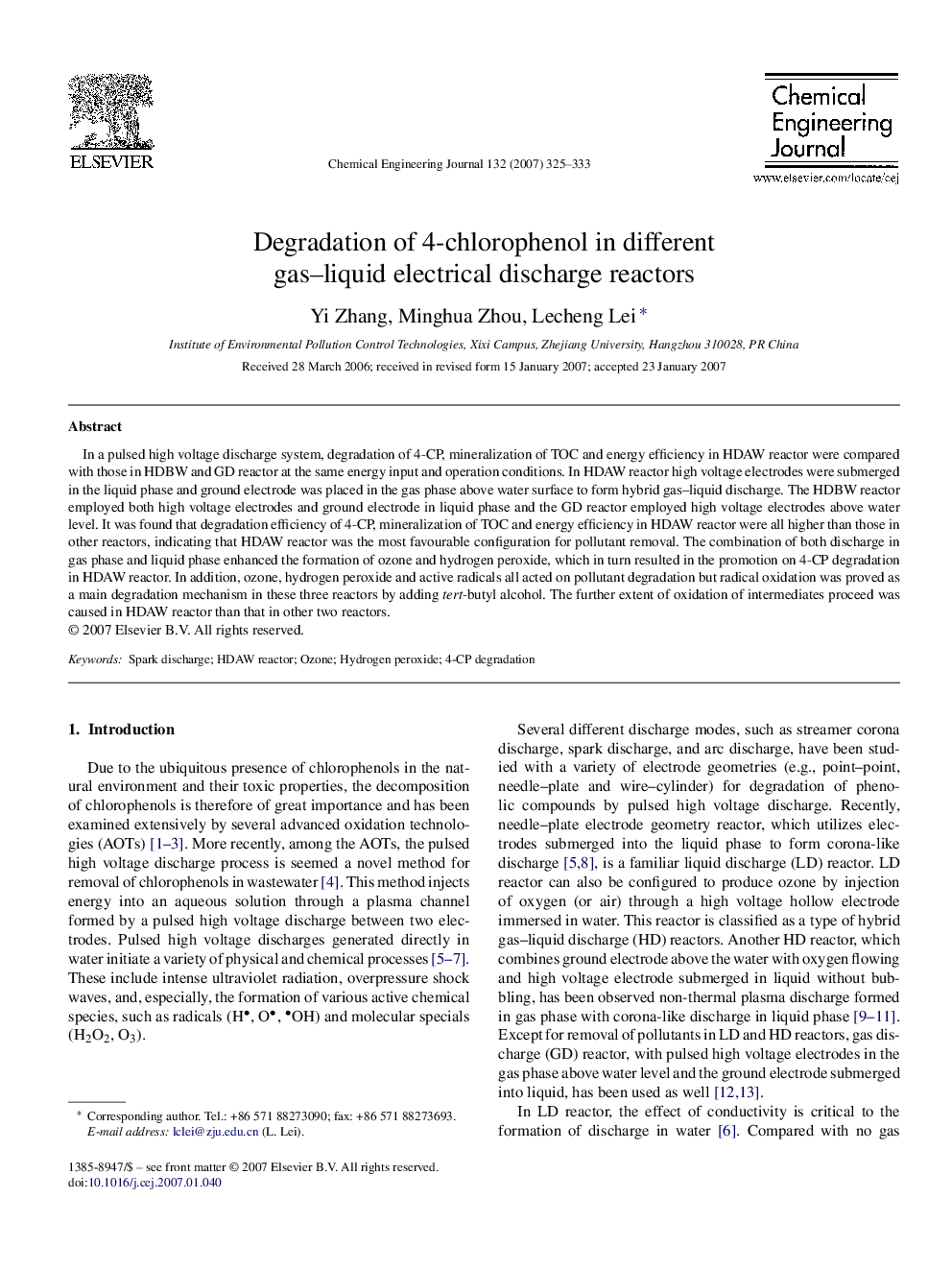| کد مقاله | کد نشریه | سال انتشار | مقاله انگلیسی | نسخه تمام متن |
|---|---|---|---|---|
| 153786 | 456538 | 2007 | 9 صفحه PDF | دانلود رایگان |

In a pulsed high voltage discharge system, degradation of 4-CP, mineralization of TOC and energy efficiency in HDAW reactor were compared with those in HDBW and GD reactor at the same energy input and operation conditions. In HDAW reactor high voltage electrodes were submerged in the liquid phase and ground electrode was placed in the gas phase above water surface to form hybrid gas–liquid discharge. The HDBW reactor employed both high voltage electrodes and ground electrode in liquid phase and the GD reactor employed high voltage electrodes above water level. It was found that degradation efficiency of 4-CP, mineralization of TOC and energy efficiency in HDAW reactor were all higher than those in other reactors, indicating that HDAW reactor was the most favourable configuration for pollutant removal. The combination of both discharge in gas phase and liquid phase enhanced the formation of ozone and hydrogen peroxide, which in turn resulted in the promotion on 4-CP degradation in HDAW reactor. In addition, ozone, hydrogen peroxide and active radicals all acted on pollutant degradation but radical oxidation was proved as a main degradation mechanism in these three reactors by adding tert-butyl alcohol. The further extent of oxidation of intermediates proceed was caused in HDAW reactor than that in other two reactors.
Journal: Chemical Engineering Journal - Volume 132, Issues 1–3, 1 August 2007, Pages 325–333